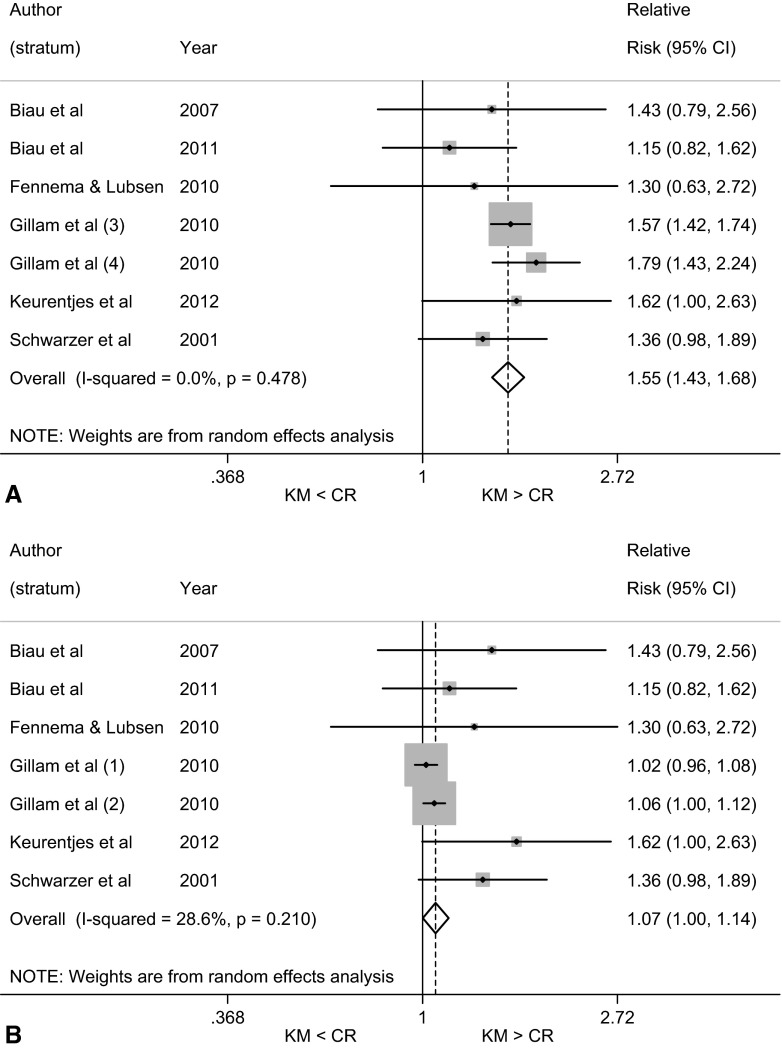Fig. 2A–B.
Forest plots of RRs compare the cumulative incidence of revision after hip or knee arthroplasty obtained using the Kaplan-Meier method versus competing-risks method for seven strata (six studies*) containing (A) the highest ratio of competing events to events of interest; and (B) the largest number of revisions. *Gillam et al. [17] estimated the cumulative incidence of revision after THA for three nonmutually exclusive subsets of data. The subset with the largest number of events of interest included two mutually exclusive strata: patients with osteoarthritis aged < 70 years and patients with osteoarthritis aged ≥ 70 years. The subset with the highest rate of competing risks included two mutually exclusive strata (cementless Austin Moore prostheses and cemented Thompson prostheses). KM = Kaplan-Meier; CR = competing risks.

